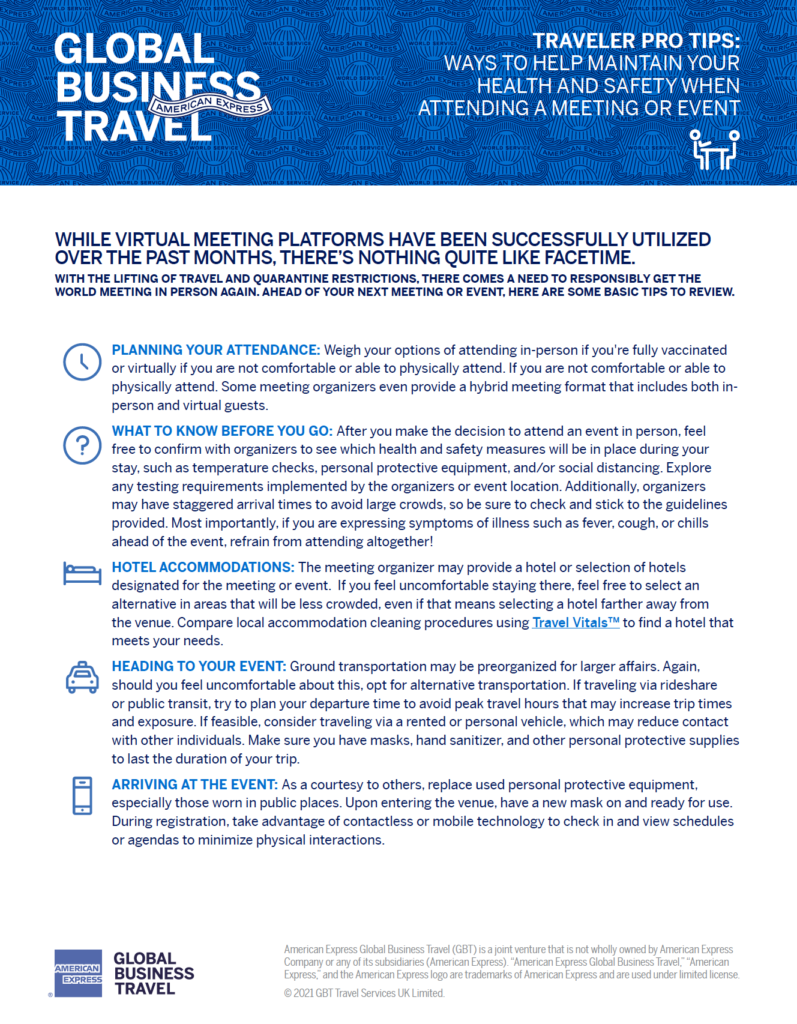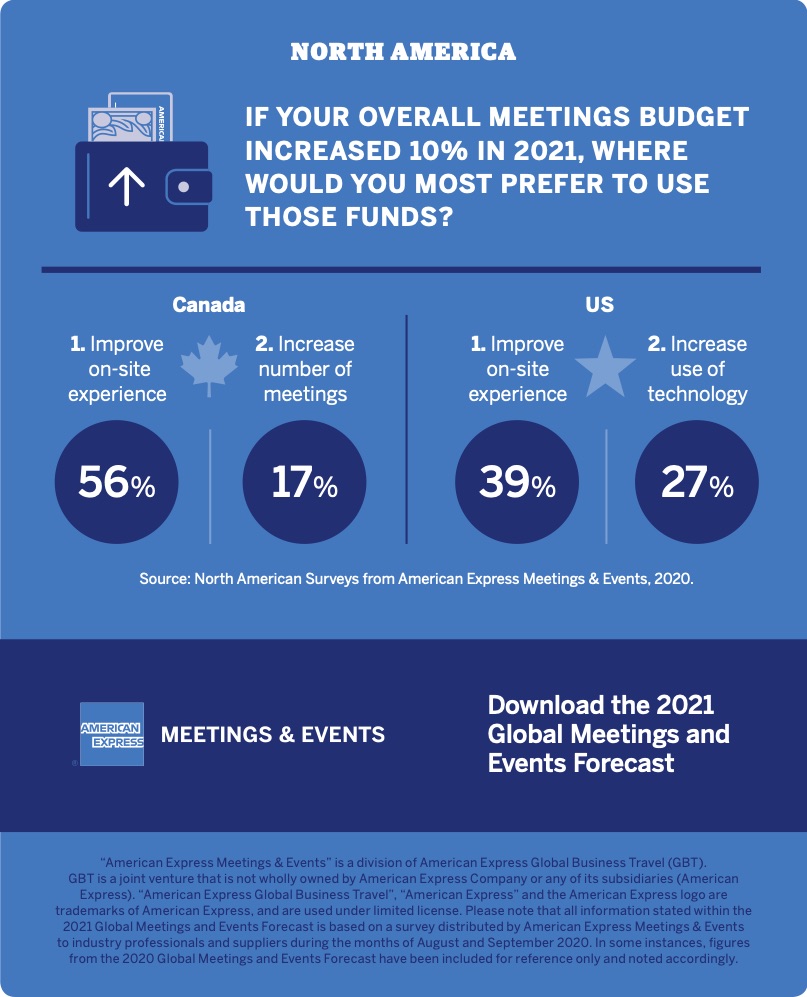The background noise. The awkward silences. The constant worrying if you and your surroundings are presentable. Interacting via a video call certainly is a different experience than interacting face-to-face. While Zoom and other videoconferencing tools have proven to be a life-saver in 2020, we’re pining for more face-to-face moments where we can conduct business more naturally and feel like humans again.
As Andrew Crawley, chief commercial officer for American Express Global Business Travel, said in an interview with Globetrender, “Videoconferencing has been very useful, but we have all been operating in a diminished state. Many of our clients have talked about how video technology has helped them ‘get by’ – but serious companies and organizations don’t want to just ‘get by.’”
We are not the only ones with this point of view. Many studies and experts validate what we’re saying – that video calls can be good for work but ultimately bad for business … and our well-being. Here’s are 10 reasons why:
1. We’re missing out on a lot of nonverbal communication that humans rely on for positive interactions.
Having a conversation is about much more than the words we’re saying. Studies show that up to 93% of communication is nonverbal. On an unconscious level, gestures, tone of voice, facial expressions, and body language help us interpret what is happening.
In a group meeting, we’re “not only following the cues of the speaker, but it’s often the side glances, eye rolls, and shrugs between our peers and other participants that offer direction and nuance to the tenor of a meeting,” Silicon Valley entrepreneur Steve Blank wrote in a piece for Medium.
A lot of subtle cues get lost on video calls because of the nature of the technology.
“Videoconferencing apps just offer a fixed gaze from one camera. Everyone is relegated to a one-dimensional square on the screen,” Blank said. “It’s the equivalent of having your head in a vise, having been wheeled into a meeting wearing blinders while tied to a chair.”
2. It’s impossible to have direct eye contact, which can hinder our interactions as well.
According to this Business Insider article, eye contact is one of the most effective ways to make people feel recognized, understood, and validated. Deeply rooted in our DNA, eye contact lets us know listeners are paying attention to us, can sway others’ opinions, and help people remember your words – all crucial for building trust and rapport in business.
Yet, as Western University PhD candidates Anna and Wuyou Sui point out in an article published by The Conversation, it’s impossible to achieve direct eye contact via current video technology. To give it to the person (or people) on your screen, you need to look at your camera, but to receive it, you need to look at their eyes on your screen. Sometimes, the people you’re speaking with aren’t even visible because they have video-sharing turned off, so you don’t know for sure if they’re looking at you or listening to what you’re saying.
3. They make us more self-conscious, which can shake our confidence in meetings.
It can be unnerving for us to see our own faces as we’re having a conversation. There can be a constant sense of internal judgment on how we look.
As cyberpsychologist Andrew Franklin explained to Insider, this may stem from a phenomenon that first occurs in adolescence called the “imaginary audience” – this belief that individuals around them are paying attention to every move they make.
“That imaginary audience phenomenon doesn’t necessarily go away [in adulthood],” he said. “People become extremely self-conscious and think that eyes are on them when, in reality, they’re not being scrutinized or criticized to the extent that they think they are.”
Yet, it seems many are more preoccupied with their appearance than the business at hand during video calls. Plastic surgeons around the world are reporting a surge in bookings with people concerned how they look on a computer screen. One type of surgery even has been dubbed the “Zoom neck lift.”
4. They cannot capture the dynamics of office life.
As Elizabeth Sander and Oliver Bauman, assistant professors at Bond University in Queensland, Australia, explain in an article in The Conversation, in-person meetings are essential office rituals that can provide comfort, put us at ease, and help us build a rapport.
As they note, when at the office, you may catch up on the way to a meeting or discuss your views before heading in. You can also pop over to someone’s desk when you need to align on a project or bounce an idea off a colleague. While there may be some small talk at the beginning of a video call, often there’s just silence as employees try to finish up a quick task while waiting for stragglers to join in.
5. They can make conversations awkward.
With face-to-face exchanges, you can have a perfectly comprehensible conversation where multiple people interrupt each other, thanks to body language and other social cues.
As Laura Dudley, a behavior analyst at Northeastern University, explains, “During in-person conversations, a person’s gestures – such as a sharp intake of breath, leaning forward, or making eye contact with someone – indicate to us that they’re about to speak.”
However, with video, such cues are lost, leading to a disjointed conversation or people opting not to speak at all.
There may also be awkward moments of silence, which can make people uncomfortable and negatively shape our views of others. A study by German academics showed that a delay of just 1.2 seconds on the phone or conferencing systems made people perceive the responder as less friendly or focused.
And the reality is, participants likely are less focused. Video calls can be distracting. Small things like people rifling around their desks, lagging connections, and background noise can steal people’s attention. Or their mind may wander to what’s happening in their own background, such as screaming kids, barking dogs, and ringing doorbells.
6. They make difficult conversations excruciating.
Remember earlier this year when some companies conducted group firings over Zoom and disabled the audio on the employees being let go? Unfortunately, we’ve seen more layoffs like those in 2020.
Video calls stink as a vehicle for delivering bad news since it’s challenging to convey empathy in a pixelated format.
“Employees [are] being told to get on Zoom at a particular time. They may be put on mute. They can’t ask questions. They can’t process it. It feels very dehumanizing,” commented psychologist Elizabeth Lombardo. “It’s tough to be fired anyway, but in this way, it causes a lot more distress.”
7. They make it harder to pitch and seal deals.
According to a report by Globetrender, 60% of business travelers say most deals and decisions cannot be made virtually. Furthermore, Ovum found that 30% of sales professionals believe that their web conferencing tools hinder sales.
Eric Goldmann, who frequently travels for his role as a healthcare technology sales executive, told the Wall Street Journal that more clients cancel on him with little notice when it’s a virtual meeting, something that rarely happened when he traveled to see them. On Zoom, he also finds it harder to sniff out what he calls the “anti-sponsors” who could derail a deal.
The actual delivery of the pitch is also trickier via video. As Chris Pash of AdNews said, you can’t just walk in, read the room, and adjust the content and style to match the body language and expressions of the prospective client. You also can’t stand, project your voice, point, smile, and frown – all strategies salespeople use to radiate empathy and create a human-to-human connection.
8. They strain our physical and mental well-being.
Zoom fatigue is an actual thing. Because we need to work harder to process nonverbal cues, we can feel drained after a marathon day of video calls.
“Our minds are together when our bodies feel we’re not. That dissonance, which causes people to have conflicting feelings, is exhausting,” said Gianpiero Petriglieri, an associate professor at INSEAD who focuses on development in the workplace.
It also can be exhausting to view people in that “Brady Bunch”-style gallery view, which can challenge the brain’s central vision.
Nonstop video calls also can cause eye strain and headaches.
9. They shine a spotlight on social inequalities.
As highlighted in The Guardian, social inequalities are stark on a screen when faced with a direct link into people’s homes. Background graphics on Zoom are one fix. But as Sara Chandran, a diversity and inclusion consultant, pointed out, employees may “be self-conscious about the state of their living spaces, especially if they are renting in house shares and fighting to find an area to quietly work in. That’s likely something they won’t want to share with their bosses.”
There is also the issue of how video calls can prioritize more vociferous speakers.
“The person who speaks loudest can often command the most space on video calls because they can just ignore the others, so it makes it much harder for people who are anxious to participate,” said Chandran.
This dynamic, the article explained, could affect employees who are lower down in the pay scale and already wary of putting a foot wrong, as well as ethnic minorities who may have concerns about speaking up in a largely white space.
10. They can be perceived as a waste of time.
Company leaders must evaluate how much value they are getting out of all the video calls because employees may feel they aren’t productive.
According to a 2020 study conducted by Wundamail, 42% of people who frequently dial into video calls contribute nothing, and 56% wish they spent less time on video calls. And yet, 73% of respondents counted video calls as “work done” when, in reality, how much work is completed or produced during a virtual session?
According to a report by Ovum, 68% of employees report that more than half of the virtual meetings they attend are not of value with late start times being cited as a key reason. The same report finds that 95% of online meetings start late and estimates that meeting tardiness costs executives about three hours every week in lost time and productivity – or the equivalent of five days and 19 hours per year.
So why are we wasting all this time when we could be having another week of paid vacation?
If you’re tired of screen time and can’t wait to travel for an in-person meeting or event, check out our dynamic Travel Vitals™ search tool to look up travel-related safety and health information and feel more confident about your next trip.

![Amex GBT INTER[action] 2021 logo Amex GBT INTER[action] 2021 logo](https://www.amexglobalbusinesstravel.com/content/uploads/2021/02/Logo_AI_2021_V8_1-300x300.jpg)
